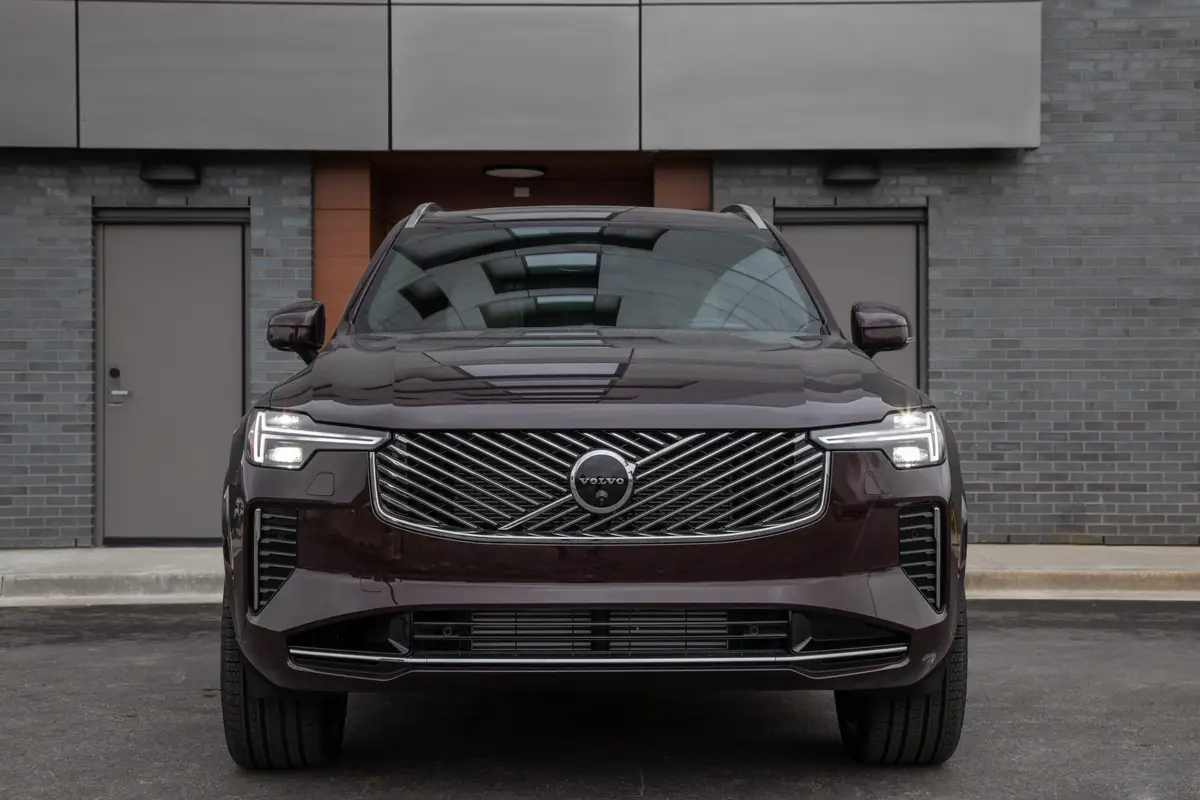2004 Dodge Durango: What's New
Vehicle Overview
After six seasons in its original form, Dodge’s sole sport utility vehicle gets a substantial redesign for the 2004 model year; DaimlerChrysler is calling the revised Durango “all new.” The SUV’s basic styling cues continue, but the new model is larger and features greater cargo capacity.
In its pre-2004 form, the Durango was considered neither too big nor too small. Though it is larger than most midsize SUVs, such as the Jeep Grand Cherokee, it fell short of a true full-size model. The new Durango is 7 inches longer, 2 inches wider and more than 3 inches taller than its predecessor.
Two new Magnum engines promise greater performance and fuel efficiency. Topping the list is the famed 5.7-liter Hemi V-8, which is ready to deliver 335 horsepower and 370 pounds-feet of torque. The standard engine in two-wheel-drive Durangos is now a 210-hp, 3.7-liter V-6. A 4.7-liter V-8 that produces 230 hp and 290 pounds-feet of torque is optional.
For 2004, the Durango is offered in ST, SLT and Limited trim levels. Its bumper height is said to be within the zone used for passenger cars, which creates better compatibility in the event of a collision. A more spacious interior yields 15-percent more cargo volume. With the third-row seat folded down, the Durango’s cargo capacity is claimed to beat that in the Chevrolet Tahoe, Ford Expedition and Toyota Sequoia. Dodge also promises best-in-class towing capacity: up to 8,900 pounds.
Exterior
Dodge promotes the “broad-shouldered presence” of the new Durango, which again starts with a familiar cross-hair grille. Single headlight covers conceal dual lights. The Durango’s silhouette features short front and rear overhangs, a dramatically sloped windshield and what Dodge calls “powerful” wheel arches. A new rear suspension uses coil springs and a solid axle.
The redesigned Durango is larger than its predecessor. It rides on a 119.2-inch wheelbase, measures 200.8 inches long overall and stands 74.3 inches tall. Standard tires are 17 inches in diameter and mounted on steel, aluminum or chrome-clad wheels. For the first time, the Durango is available with a sunroof.
Interior
The Durango may be equipped with three rows of seats, which allows room for seven people. A five-passenger model is also offered. Cargo volume behind the third-row seat is 19 cubic feet; that space grows to 67.3 cubic feet when the second-row seat is folded and 101.3 cubic feet when the second- and third-row seats are folded down. The second-row seats now recline. Occupants in that row get their own climate controls and a DVD entertainment system.
A new instrument panel contains white-faced gauges and a large, central speedometer. Automatic temperature control is available on Limited models. A new four-spoke steering wheel is installed, and a fast-food bin sits at the base of the center stack.
Under the Hood
The standard engine in two-wheel-drive Durangos is a 210-hp, 3.7-liter V-6. A 4.7-liter V-8 that produces 230 hp is optional. For heavier-duty requirements, Durango buyers may also specify a 5.7-liter Hemi V-8 that’s eager to crank out 335 hp and 370 pounds-feet of torque.
A four-speed-automatic transmission mates with the V-6 engine, and V-8 models work with a five-speed automatic. Models with V-8 engines have a Tow/Haul feature built into the transmission, which Dodge says provides crisper shifts and limits gear searching while towing. The Durango comes with either rear-wheel drive or full-time four-wheel drive, which has Low-range gearing.
Safety
All-disc antilock brakes and dual-stage front airbags with an occupant-sensing system are standard. Dodge claims that the Durango’s brakes are the largest in its class. The new braking system features electronic brake-force distribution for improved panic stops. Optional side curtain-type airbags for all three rows of seats deploy from the ceiling.
Driving Impressions
The Durango steers lighter than expected, and the SUV has a comparatively soft suspension, which translates to an especially comfortable ride. It rides as well as many passenger cars, and better than some others, but it can get a little woozy through repeated curves.
Handling is less than ideal, even on the expressway, as the Durango is a little too inclined to edge out of its lane. The new Durango’s steering effort is really too light for trucklike confidence, which the previous Durango delivered. When comparing the previous Durango with the revised version, the older model actually came across as more stable and sure-footed. The suspensions differ among the three engine choices, but they’re on the subtle side.
Surprisingly, the new Durango doesn’t stand above the pack in acceleration either. Response from the Hemi V-8 is less dramatic than expected. It feels seriously strong only when dropping into a low gear, which is occasionally abrupt. Automatic-transmission response is better with the V-6 engine, which is a little noisier when pushed, but it reacts promptly. The 4.7-liter V-8 might seem like a good compromise, but flooring the gas too often results in delayed, modest acceleration that’s not much better with the V-6.
Overall, the Durango’s performance actually stands tallest when it goes off-road. The seats are very comfortable and feature good support. Visibility could be better because the thick A- and B-pillars obscure the view somewhat. Getting into and out of the Durango demands quite a climb, but running boards and grab handles on the A-pillars help.
Featured stories




